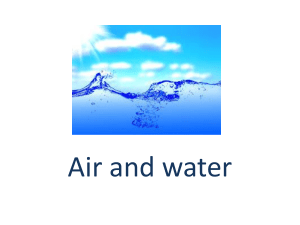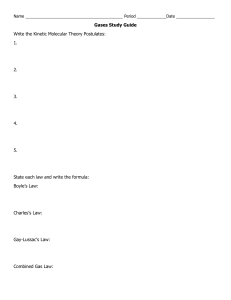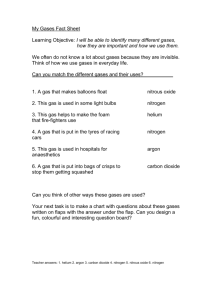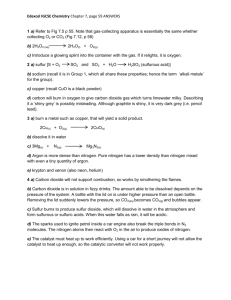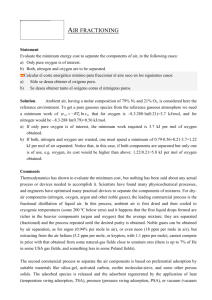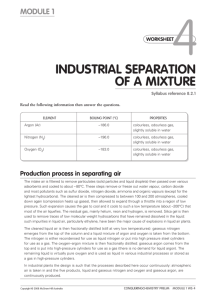Dalton's Law of Partial Pressures Worksheet
advertisement
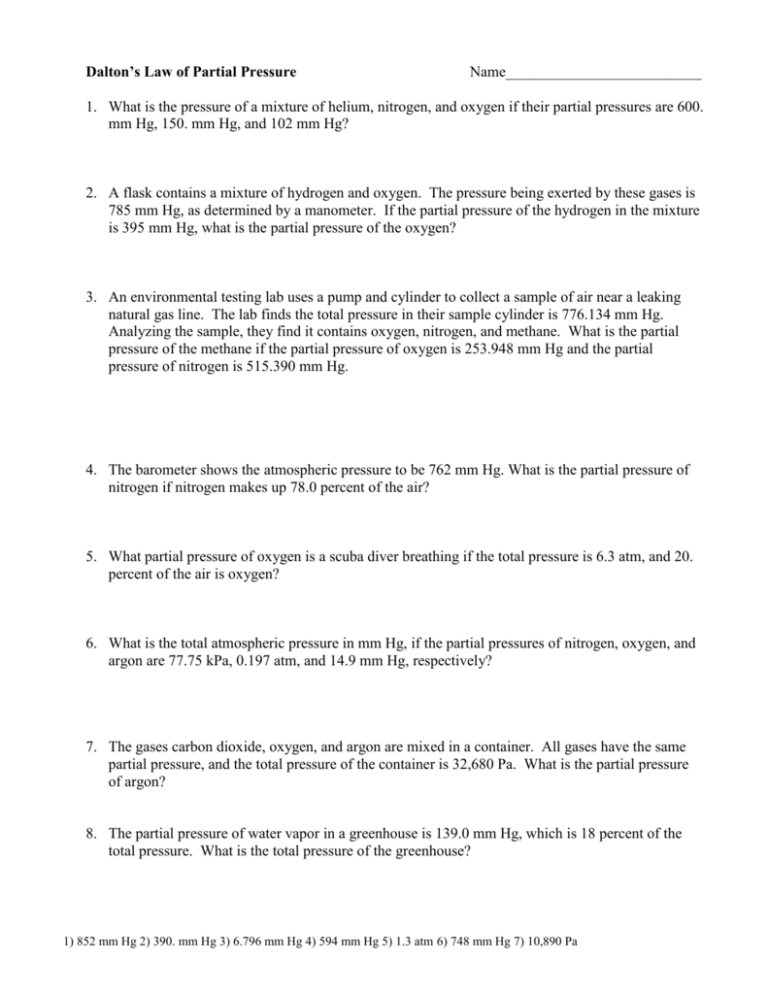
Dalton’s Law of Partial Pressure Name__________________________ 1. What is the pressure of a mixture of helium, nitrogen, and oxygen if their partial pressures are 600. mm Hg, 150. mm Hg, and 102 mm Hg? 2. A flask contains a mixture of hydrogen and oxygen. The pressure being exerted by these gases is 785 mm Hg, as determined by a manometer. If the partial pressure of the hydrogen in the mixture is 395 mm Hg, what is the partial pressure of the oxygen? 3. An environmental testing lab uses a pump and cylinder to collect a sample of air near a leaking natural gas line. The lab finds the total pressure in their sample cylinder is 776.134 mm Hg. Analyzing the sample, they find it contains oxygen, nitrogen, and methane. What is the partial pressure of the methane if the partial pressure of oxygen is 253.948 mm Hg and the partial pressure of nitrogen is 515.390 mm Hg. 4. The barometer shows the atmospheric pressure to be 762 mm Hg. What is the partial pressure of nitrogen if nitrogen makes up 78.0 percent of the air? 5. What partial pressure of oxygen is a scuba diver breathing if the total pressure is 6.3 atm, and 20. percent of the air is oxygen? 6. What is the total atmospheric pressure in mm Hg, if the partial pressures of nitrogen, oxygen, and argon are 77.75 kPa, 0.197 atm, and 14.9 mm Hg, respectively? 7. The gases carbon dioxide, oxygen, and argon are mixed in a container. All gases have the same partial pressure, and the total pressure of the container is 32,680 Pa. What is the partial pressure of argon? 8. The partial pressure of water vapor in a greenhouse is 139.0 mm Hg, which is 18 percent of the total pressure. What is the total pressure of the greenhouse? 1) 852 mm Hg 2) 390. mm Hg 3) 6.796 mm Hg 4) 594 mm Hg 5) 1.3 atm 6) 748 mm Hg 7) 10,890 Pa
